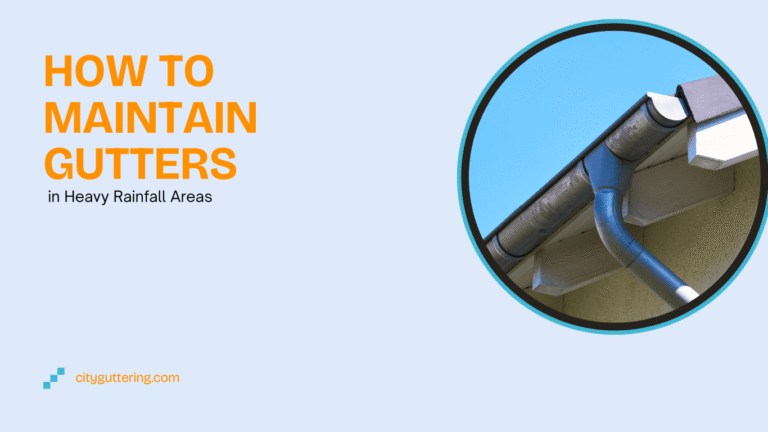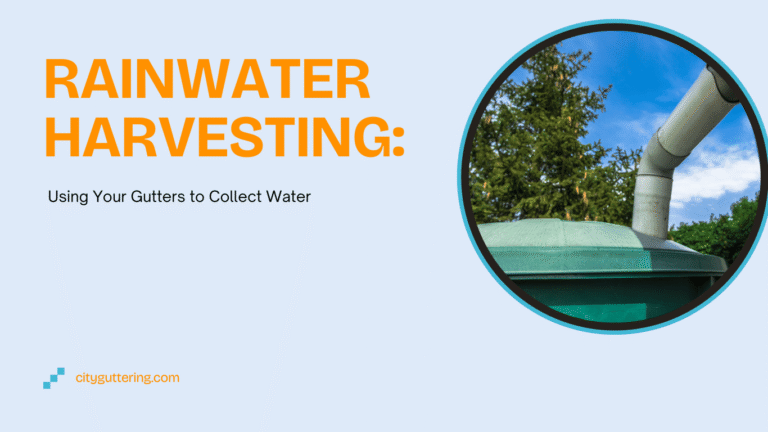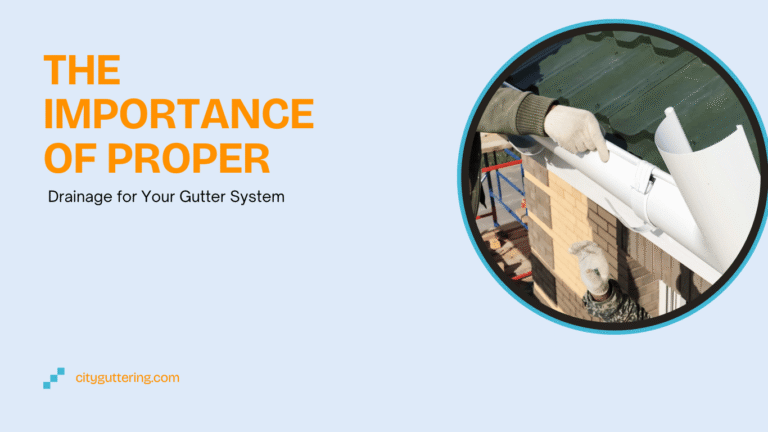Rainwater harvesting is gaining attention across the UK as more households look for sustainable ways to manage resources and reduce water bills. One of the simplest and most effective ways to collect rainwater is by using your gutter system. With the right setup, your gutters can channel rainwater from your roof into storage tanks, ready for use in gardening, cleaning, and other non-drinking purposes.
For homes in London and Surrey, where rainfall is frequent but water costs are rising, installing a rainwater harvesting system can be both practical and environmentally responsible. The best part is that it starts with something you already have – your gutters.
What is Rainwater Harvesting and Why is it Important?
Rainwater harvesting is the process of collecting and storing rainwater that falls on your roof, instead of letting it drain away. This stored water can be used for various purposes, from watering plants to washing cars, and even flushing toilets when set up correctly.
In the UK, using rainwater in this way not only helps reduce household water bills but also eases pressure on local water supply networks. With climate change affecting rainfall patterns, having your own source of collected water can also be a reliable backup during dry spells.
How Your Gutter System Plays a Role in Rainwater Collection
Your gutter system is the first step in any rainwater harvesting setup. As rain falls on your roof, gutters channel the water towards downpipes, which can be directed into a water butt or storage tank.
However, the efficiency of this process depends heavily on the condition of your gutters. Blocked, sagging, or leaking gutters can waste valuable water and cause overflow problems. A clean, well-maintained gutter system ensures that you get the most out of every rainfall.
Benefits of Using Gutters for Rainwater Harvesting
Here are some of the key advantages of collecting rainwater through your gutter system:
- Lower water bills – Using collected rainwater for garden irrigation, outdoor cleaning, or toilet flushing reduces mains water usage.
- Eco-friendly water management – Reduces reliance on treated water, which takes energy and resources to produce.
- Less strain on drainage systems – Prevents stormwater overloading local sewers during heavy rains.
- Emergency water source – Stored water can be useful during temporary water supply disruptions.
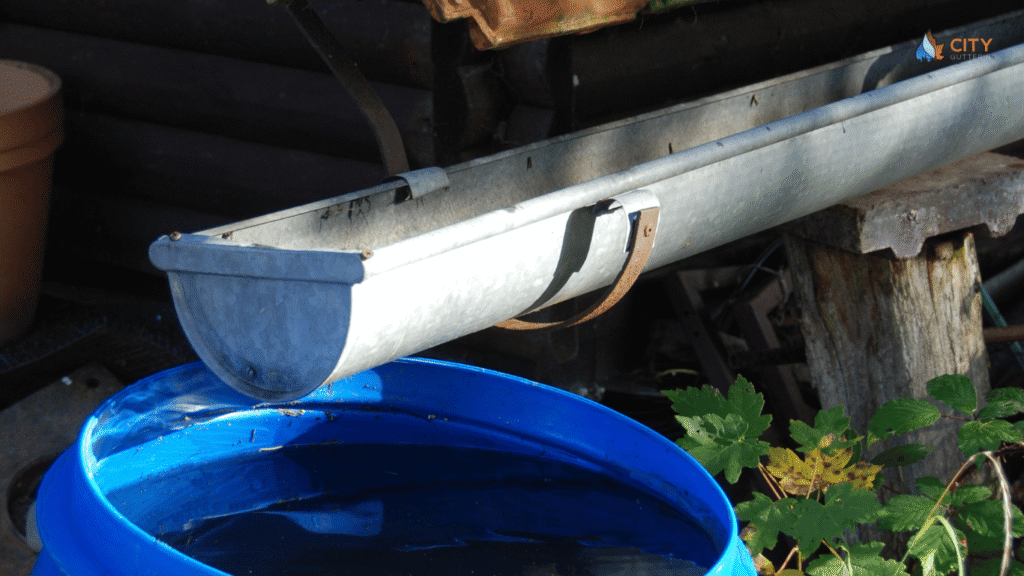
Setting Up a Gutter-Based Rainwater Harvesting System
A functional rainwater harvesting setup doesn’t have to be complicated. With a few key components, your gutters can start collecting water efficiently.
Step 1 – Assess the Condition of Your Gutters
- Check for leaks, rust, or sagging sections.
- Clear out leaves, moss, and debris to keep water flowing freely.
- Repair or replace damaged parts before installing a collection system.
Step 2 – Install Downpipe Diverters
- A diverter directs water from your downpipe into a water storage tank.
- They’re easy to fit and allow excess water to bypass the tank once it’s full.
- Choose a model suited to your gutter size and roof area.
Step 3 – Choose the Right Water Storage Tank
- Water butts – Small and affordable, perfect for gardens.
- Larger above-ground tanks – Ideal for bigger properties with high water demand.
- Underground tanks – Space-saving option, though more costly to install.
Step 4 – Add Filtration and First-Flush Systems
- Filters remove leaves, dirt, and other debris from the water.
- First-flush devices divert the initial runoff, which may carry roof dust and contaminants, keeping stored water cleaner.
Maintenance Tips to Keep Your System Working
Once your rainwater harvesting system is installed, regular maintenance ensures it works effectively year-round.
- Clean gutters at least twice a year, ideally in spring and autumn.
- Inspect diverters and filters for blockages after heavy rain.
- Check storage tanks for algae growth and clean them as needed.
- Ensure overflow outlets are clear to prevent water backing up into gutters.
For homeowners who don’t want to risk climbing ladders, professional gutter cleaning services like City Guttering London can handle inspections and maintenance safely.
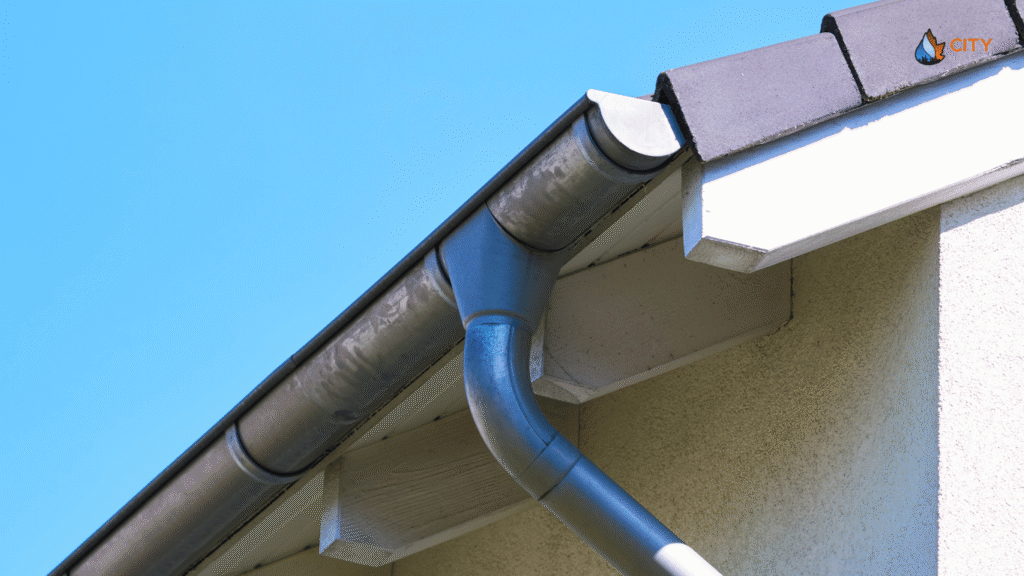
Legal and Safety Considerations in the UK
Before you start using collected rainwater, it’s important to be aware of UK guidelines:
- Rainwater collected from roofs is not safe for drinking without proper treatment.
- Safe uses include watering plants, washing vehicles, and flushing toilets.
- Avoid connecting your rainwater system directly to the mains supply without an approved backflow prevention device.
Local councils may have specific rules or even offer incentives for installing rainwater harvesting systems, so it’s worth checking.
Common Problems and How to Avoid Them
Like any system, rainwater harvesting can face issues if not maintained properly.
- Overflowing gutters – Usually caused by blockages; solved with regular cleaning.
- Dirty water in tanks – Install filters and first-flush systems to keep debris out.
- Algae growth – Use opaque tanks and keep lids sealed to block sunlight.
- Winter damage – Insulate tanks and pipes to prevent freezing.
By keeping on top of inspections and repairs, these problems can be easily prevented.
Costs and Potential Savings
Setting up a basic rainwater collection system can cost as little as £100–£300 for a water butt, diverter, and basic installation. Larger systems with underground tanks and advanced filtration can cost several thousand pounds.
Over time, savings on water bills can add up, especially for homes with large gardens or multiple outdoor water needs. The system also adds value to your property by showing a commitment to sustainable living.
Why Professional Gutter Services are Essential
While some homeowners prefer a DIY approach, professional gutter services offer important advantages:
- Safety – Avoid the risks of working at height.
- Expert inspections – Professionals can spot problems you might miss.
- Better efficiency – Well-maintained gutters capture more water and prevent damage to your home.
City Guttering London offers fast, reliable gutter cleaning, repairs, and replacements across London, Surrey, and Hampshire. Whether you’re preparing for a rainwater harvesting installation or simply want your gutters in top shape, we can help ensure your system works flawlessly.
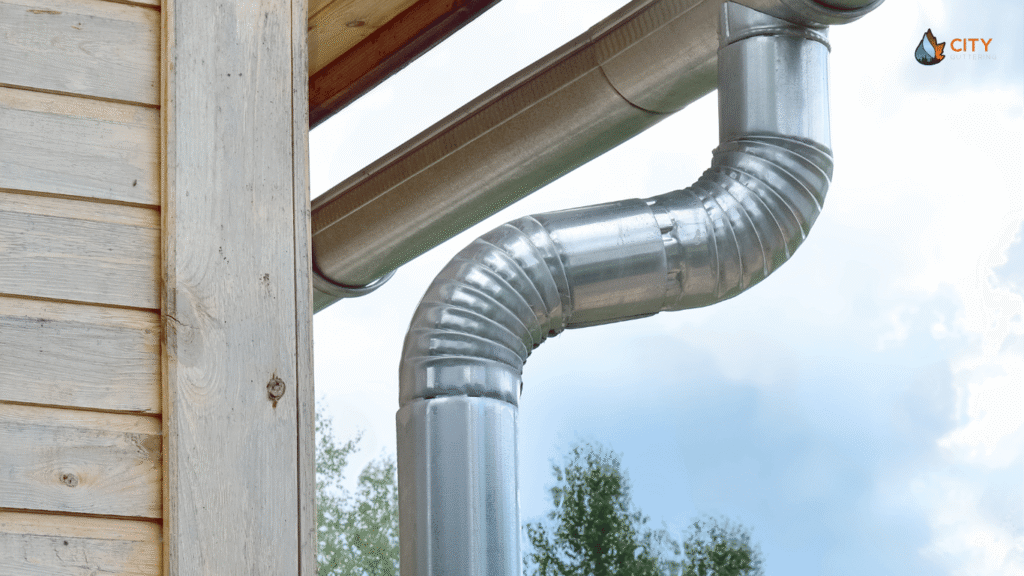
Conclusion
Rainwater harvesting is a smart way to make use of one of nature’s free resources. With a reliable gutter system, you can collect and store rainwater for practical, eco-friendly use while reducing your reliance on mains supply.
By keeping your gutters clean and in good condition, you ensure maximum water capture and protect your home from overflow damage. Whether you’re looking for a basic water butt setup or a larger collection system, professional gutter maintenance is the key to long-term success.
City Guttering London is here to help homeowners across London and Surrey set up and maintain their gutter systems for effective rainwater harvesting. Contact us today for a free quote and expert advice.



